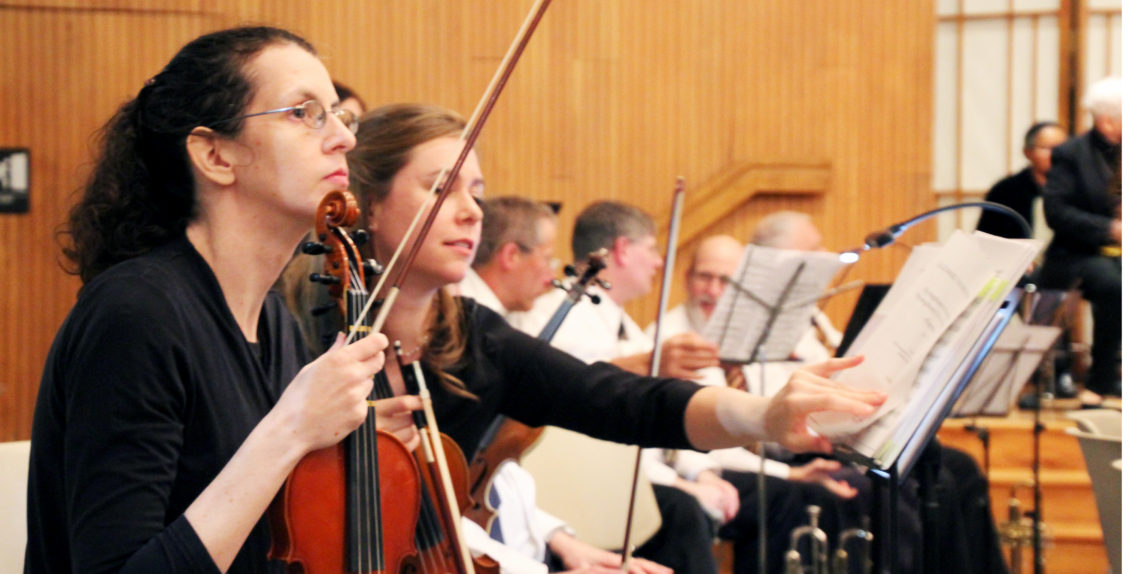History of the NIH Community Orchestra
Over a half century, a number of orchestras have formed at the National Institutes of Health. The current NIH Community Orchestra is the fourth, founded in 1996 by the late Gary Daum. Rosters have included more than 70 musicians with full symphony orchestra instrumentation, and concerts regularly include works performed with full chorus.
The NIH Community Orchestra (known initially as the NIH Chamber Orchestra) began meeting in October 1996 to provide an orchestral outlet for the rich and diverse musical talent of the NIH and HHS research community of string players. In the following year, it added woodwinds and brass and quickly expanded in size and repertoire. The group’s first major concert was the community’s first NIH Messiah Sing-along on December 21, 1997. For its role in the project, NIHCO received a 1998 Award of Excellence from the NIH Recreation & Welfare Association (R&W).
In its initial years, the NIH Community Orchestra rehearsed and performed in the Masur Auditorium of the NIH Clinical Center. Unfortunately, the events of September 11, 2001 and enhanced campus security measures caused the group to lose its rehearsal and performance facilities. Thanks to the tenacity of NIHCO musicians, the December Messiah concert was not only performed on schedule, it became one of the group’s greatest musical triumphs.
In NIHCO’s June 2002 concert, former associate conductor Jesse Parker presented the world premiere of Psalm 9:11, a composition by NIHCO founder Gary Daum as a musical reflection on the events of September 11, 2001. The performance represented one of the first 9-11 related orchestral compositions to be performed anywhere. Psalm 9:11 continues to be performed by various choirs and ensembles in the Washington DC area.
More recently, a Dec. 2012 article in the online “Patch” community captures the spirited musicianship of the NIH Community Orchestra.
The video below celebrates NIHCO’s past, present and future.
